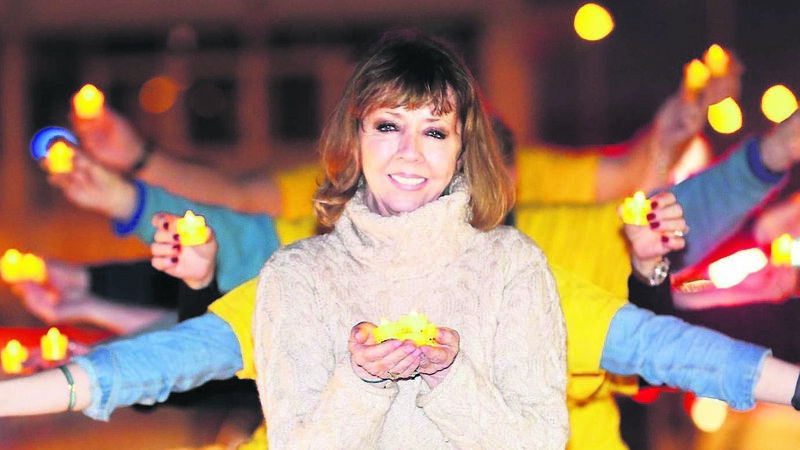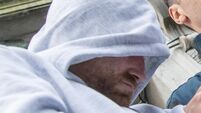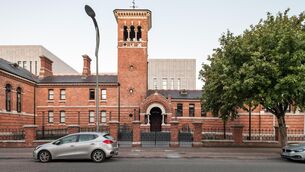Darkness into Light: Charity founder’s ‘lightbulb moment’

Pieta House Joan Freeman at the launch of Darkness Into Light, which is supported by Electric Ireland. Picture: Sasko Lazarov/Photocall Ireland
IF EVER I hear of someone who has died by suicide now, my first thought is of their family and loved ones and what a terrible journey lies ahead of them. No words can describe this journey: despair, darkness, desolation capture it only to a small degree.
The question that everyone who has travelled this route usually begins with is: ‘Why?’ — a question that can never be answered becoming a lonely scream in the dark that nobody hears, an inner wail that can never be calmed.
This question is usually followed at breakneck speed by the awful questions: ‘Why didn’t I spot it?’ ‘Why didn’t I stop it?’.
If ever I was to give words of comfort to families and friends who have lost someone through suicide, I would tell them in total honesty that the answer to these questions is — because family and friends are the last people to know. Many people say that their loved one showed no signs of suicidal intent. They are right; the loved one in distress was trying to protect them.
I felt an overwhelming sense of guilt. With all deaths, there are regrets about not spending more time with the person who died, or being kinder when they were alive, but suicide comes with a particular type of guilt that will forever remain. Regrets circle endlessly: I should have known; I could have prevented it; why didn’t I listen harder or take them seriously? Guilt is the one emotion that eats away at your core.
Every day I would surround myself with books and articles on suicide. With every article and every book, I read on the subject, however, I was becoming increasingly despondent, feeling increasingly guilty, because I was learning that the death of the person I was grieving might have been prevented. I became depressed. I was functioning on a basic level. I would continue to leave my children off to school, but I would go back to bed immediately afterwards. Over the days, weeks, and months that followed, regardless of what I read, I wasn’t getting any relief. That is, until one day.
As usual, I was lying on my bed and the children were at school. I found myself surrounded by books. These were about bereavement, depression, mental health, and, of course, suicide. On that morning, however, for some reason I picked up a book that was not about any of those topics. This book dealt with art through the centuries, revealing remarkable paintings and sculptures. One artist whom I will never forget: Michelangelo.

This young man, at just 23 years of age, had carved a sculpture out of one large piece of marble. His main model of inspiration was a woman called Mary of Nazareth.
This humble, ordinary woman became the focus of the sculpture, the Pietà. Housed in the Sistine Chapel in Rome, the Pietà shows Mary, a mother, cradling the dead, broken body of her crucified son. His lifeless body is sprawled across her lap, while she looks intently into his face.
This incredible sculpture held something truly magical for me — staring at the mother’s expression was an epiphany for me. It was the look of incredibly tender, compassionate acceptance written on her face that made me sit upright and realise that this is what our country needed. We needed a Pietà in every community so that we, too, could look on people who were in distress with tenderness and compassionate understanding.
It was a lightbulb moment that made me jump out of bed. With this ‘look’ of compassion still in my head, I ran down to Lucan village to Kieran Brady’s office. Kieran is an auctioneer whom I knew, admired, and trusted. I told him I wanted to buy a house. What I had in mind was a house where the person in crisis would be embraced and held until they could walk on their own again. A professional service that would provide a new therapeutic model, which would view people as people in short-term crisis rather than people who needed medical intervention.
After listening intently to me, he said with great wisdom: ‘Joan, what you want is to create a charity.’
After my conversation with Kieran, I spoke to my brother John Lowe (who later became known as the Money Doctor). They both convinced me to start a charity, an organisation that would help people in suicidal crisis, openly, compassionately, and with incredible acceptance.
In January 2006, Pieta House opened its doors.
That was my beginning, and yet every new milestone for Pieta House became the beginning. Every person who wanted to take up the baton, or who wanted to take a service to their community, every person who was drowning in grief and wanted to atone for their loss — that was a new beginning.
The following stories are from the people who made that new beginning — who made Pieta House and, indeed, Darkness into Light the incredibly soothing and hopeful light it is today.
- Extracted from ‘Darkness into Light: A Nations’ Response’ by Joan Freeman. Published by Beehive Books.







 App?
App?


